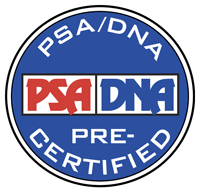TLS signed “Charles A. Lindbergh,” one page, 8.5 x 11, October 23, 1939. Written from Lloyd Neck, Huntington, New York, a letter to John Zwick of the Rockefeller Institute for Medical Research, in full: "My mail has accumulated to such an extent during the last few weeks that I am almost hopelessly behind in correspondence. I have just read your letter and apologize for this late answer. I would like very much to have seen the apparatus you installed at the Fair but, contrary to press reports, I have not even had a chance to go inside the gates, and I have only been to the Institute on one or two occasions since I arrived home last April. I have to leave for Washington again within the next day or two and don't see how I will be able to go to the Fair before it closes for the year. As you know, there are a number of complications to my going to the Fairgrounds aside from finding the necessary time. My wife went in for a visit last summer and encountered a very disagreeable experience with a press photographer in the Art Building which caused her to return without going further. Dr. Carrel told me of the Exhibit before he left for France, and, from his description, you must be doing a good job in demonstrating." In fine condition, with some light toning, and a paperclip impression to the top edge.
When his sister-in-law Elisabeth Morrow was discovered to have rheumatic heart disease in 1929, Lindbergh began a quiet collaboration with Nobel Prize-winning scientist Alexis Carrel on the development of a heart-bypass pump designed to enable open-heart surgery. Lindbergh corresponded regularly with the staff at the Rockefeller Institute, particularly John Zwick, one of Carrel’s main assistants, who dealt with any problems or modifications to the device. The result, a perfusion pump, was a hand-blown, 18-inch-high, clear Pyrex glass configuration devised to keep organs functioning outside of the body. The pump itself became an object of wonder even in the absence of its creators, and proved a popular exhibit at the 1939 World’s Fair in New York City, where a perfusion of a canine thyroid drew large crowds. Although Morrow sadly passed away in 1934, a year before the pump was completed, its creation served as a precursor to medical devices like the heart-lung machine, in addition to helping develop a practicable method for stopping the heart during surgical procedures.

This item is Pre-Certified by PSA/DNA
Buy a third-party letter of authenticity for
$100.00
*This item has been pre-certified by a trusted third-party authentication service, and by placing a bid on this item, you agree to accept the opinion of this authentication service. If you wish to have an opinion rendered by a different authenticator of your choosing, you must do so prior to your placing of any bid. RR Auction is not responsible for differing opinions submitted 30 days after the date of the sale.